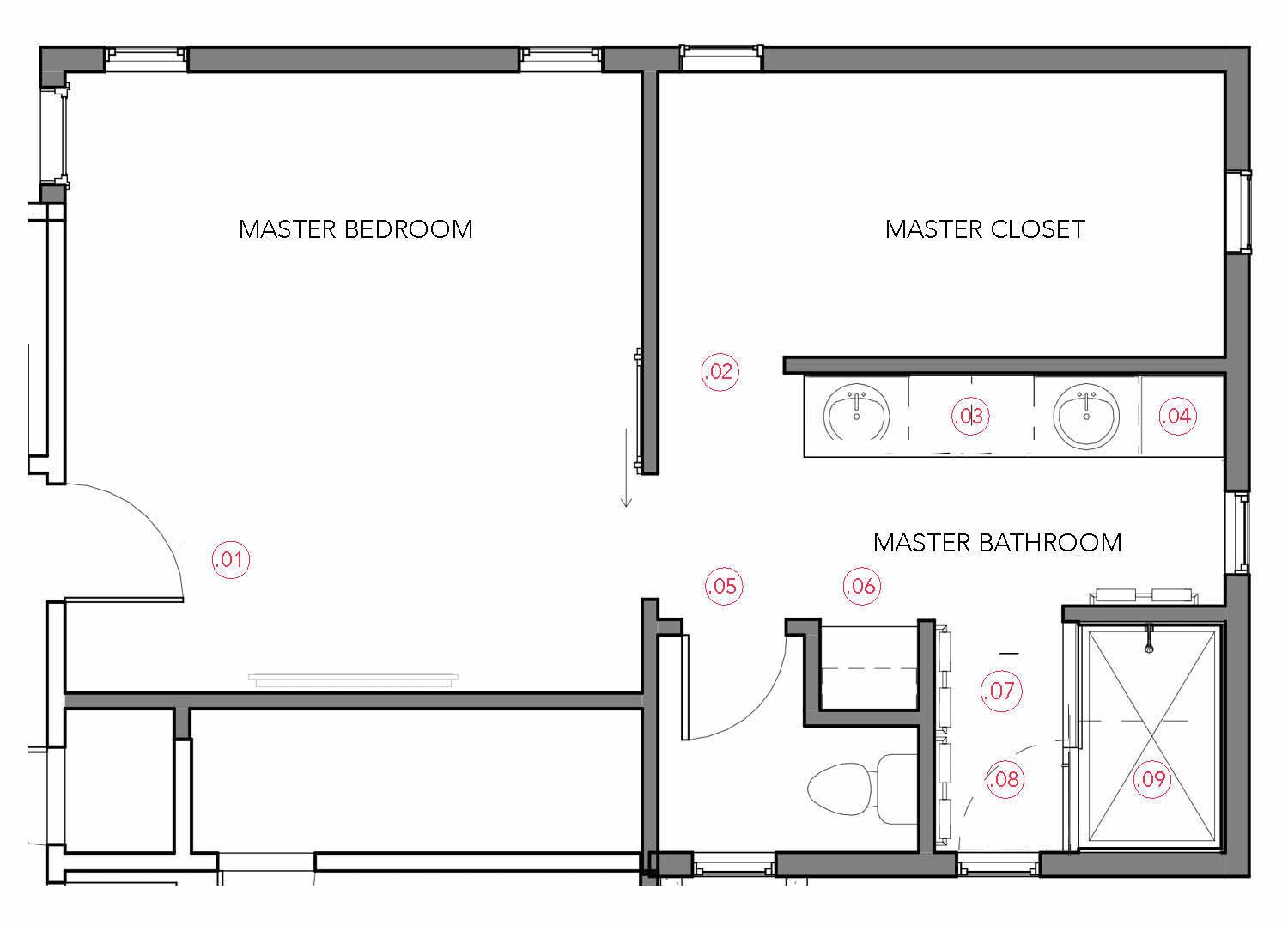Master Bedroom Bathroom Closet Floor Plan Essentials

The master suite is a sanctuary within your home, a space for relaxation, rejuvenation, and personal expression. A well-designed floor plan for this area is crucial to maximizing its potential, ensuring a seamless flow between the bedroom, bathroom, and closet.
Maximizing Space and Functionality
An effective master suite design prioritizes functionality and efficient use of space. By carefully considering the layout, you can create a room that feels spacious and comfortable, even in smaller homes. This involves strategically placing furniture, fixtures, and appliances, minimizing wasted space, and creating a sense of flow between different areas.
- Walk-in Closet Design: A well-designed walk-in closet provides ample storage space and easy access to your wardrobe. Consider including shelves, drawers, hanging rods, and shoe racks to organize your belongings efficiently. You can also incorporate features like built-in mirrors, lighting, and seating to enhance the overall experience.
- Bathroom Layout: The bathroom should be a relaxing oasis, with sufficient space for all necessary fixtures. A double vanity provides ample counter space and storage for toiletries, while a separate shower and soaking tub offer different bathing experiences. A well-planned layout also ensures easy movement and access to all areas.
- Open Concept: In some cases, an open concept design can create a sense of spaciousness and flow between the bedroom, bathroom, and closet. This approach involves removing walls to create a more unified space. However, it is important to consider privacy and ensure adequate separation between different areas.
Natural Light, Ventilation, and Privacy
Natural light and ventilation are essential for creating a comfortable and inviting master suite. These elements not only enhance the ambiance but also contribute to a healthy living environment.
- Windows and Skylights: Large windows or skylights can flood the space with natural light, creating a bright and airy feel. Position windows strategically to maximize natural light and ventilation. For example, placing a window in the shower or near the soaking tub can create a spa-like experience.
- Ventilation: Proper ventilation is crucial for removing moisture and odors, particularly in the bathroom. Ensure the bathroom is equipped with an exhaust fan that vents to the outside. Consider adding a window for additional ventilation.
- Privacy: Privacy is essential in the master suite, especially in the bathroom and closet. Use frosted glass, blinds, or curtains to provide privacy while still allowing natural light to enter. Consider the placement of windows and doors to ensure a sense of seclusion.
Master Suite Floor Plan Design, Master bedroom bathroom closet floor plans
This floor plan incorporates a walk-in closet, a luxurious bathroom with a soaking tub, and a separate shower, providing a spacious and functional layout for a master suite.
Floor Plan Description:
The master bedroom is approximately 15 feet by 18 feet, with a large walk-in closet and a luxurious bathroom. The walk-in closet is 8 feet by 10 feet, providing ample space for storage and organization. The bathroom features a double vanity, a separate shower, and a soaking tub. The shower is 4 feet by 5 feet, and the soaking tub is 5 feet by 7 feet. The bathroom also has a window for natural light and ventilation. The master bedroom has a large window for natural light and ventilation. The overall layout maximizes space and functionality, providing a comfortable and luxurious living experience.
Master Bedroom Bathroom Closet Floor Plan Layout Tips: Master Bedroom Bathroom Closet Floor Plans

Creating a functional and aesthetically pleasing master bedroom bathroom closet floor plan requires careful consideration of layout and storage solutions. By incorporating smart design strategies, you can maximize space, enhance flow, and create a sanctuary that meets your specific needs.
Advantages and Disadvantages of Different Layouts
The choice between an open-concept or separate rooms for your master bedroom, bathroom, and closet depends on your preferences and lifestyle.
- Open-concept: This layout offers a sense of spaciousness and allows for seamless transitions between the bedroom, bathroom, and closet. However, it may lack privacy and require careful planning to ensure a visually cohesive design.
- Separate rooms: This layout provides greater privacy and allows for distinct design schemes for each space. However, it can feel more compartmentalized and may require more square footage.
Maximizing Space and Functionality
Efficiently utilizing space is crucial in a master bedroom bathroom closet floor plan.
- Vertical storage: Utilize vertical space by installing tall cabinets, shelves, and drawers. This maximizes floor space and allows for efficient storage of clothing, linens, and other items.
- Multi-functional furniture: Opt for furniture that serves multiple purposes, such as a vanity that doubles as a dresser or a storage ottoman that provides extra seating.
- Mirrors: strategically placed mirrors can create an illusion of more space and enhance the natural light in the room.
- Built-in storage: Consider incorporating built-in shelving, drawers, and cabinets to maximize storage space and create a streamlined look.
Incorporating Storage Solutions
Storage solutions are essential for maintaining organization and maximizing functionality in a master bedroom bathroom closet floor plan.
- Pull-out drawers: Pull-out drawers in cabinets and under sinks allow for easy access to items stored at the back.
- Sliding shelves: Sliding shelves maximize vertical space and provide easy access to items stored on higher shelves.
- Hanging organizers: Hanging organizers are ideal for storing shoes, accessories, and other items that can be hung.
- Over-the-door organizers: Over-the-door organizers are space-saving solutions for storing small items like toiletries, makeup, and jewelry.
Creating Flow and Balance
Achieving a seamless flow between the bedroom, bathroom, and closet is crucial for creating a harmonious and functional space.
- Open doorways: Open doorways allow for natural light to flow between the spaces and create a sense of openness.
- Consistent flooring: Using consistent flooring throughout the master suite creates a sense of continuity and flow.
- Matching finishes: Matching or complementary finishes, such as hardware and paint colors, can create a cohesive design and enhance the flow between the spaces.
